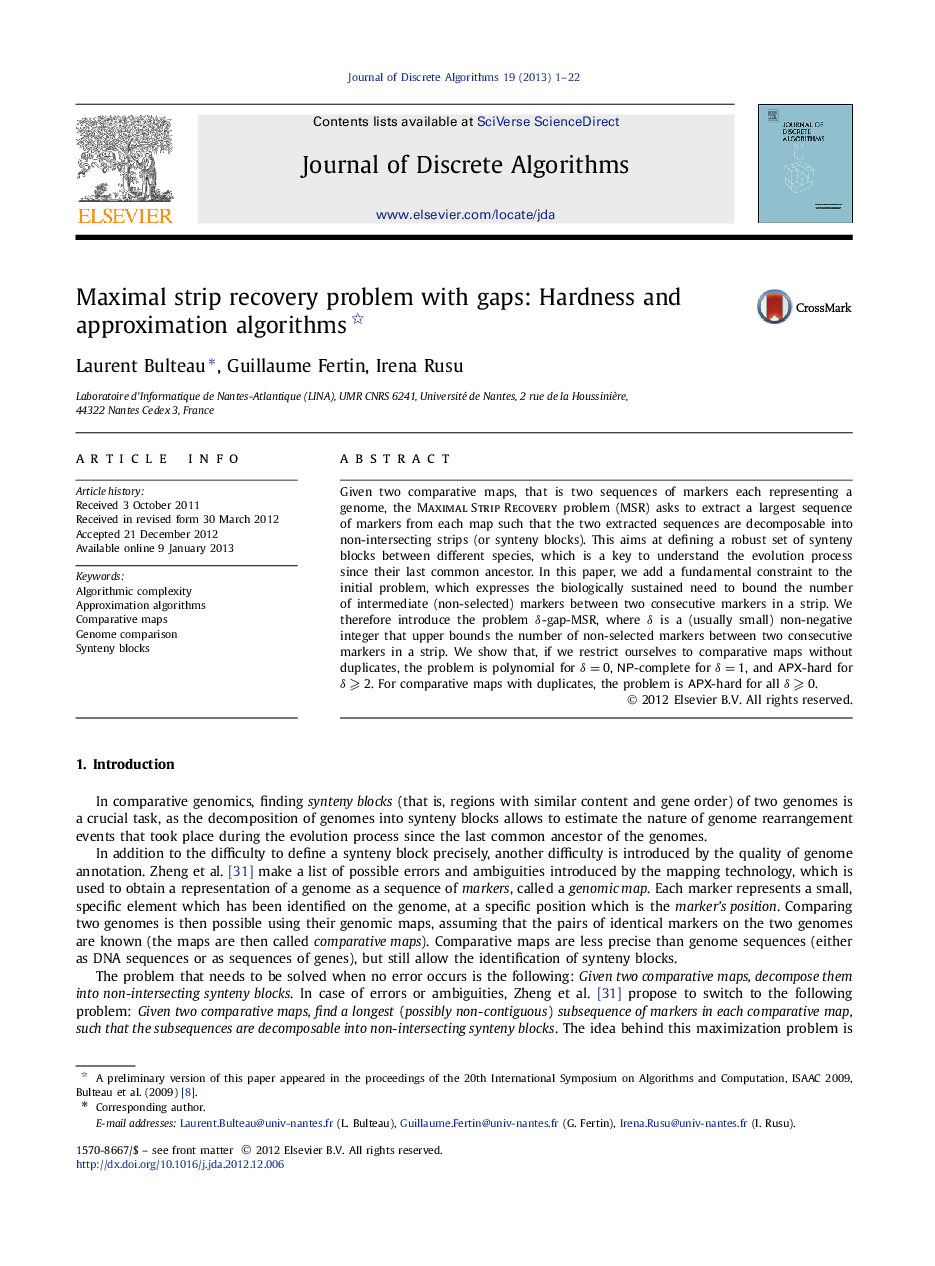| کد مقاله | کد نشریه | سال انتشار | مقاله انگلیسی | نسخه تمام متن |
|---|---|---|---|---|
| 430901 | 688228 | 2013 | 22 صفحه PDF | دانلود رایگان |

Given two comparative maps, that is two sequences of markers each representing a genome, the Maximal Strip Recovery problem (MSR) asks to extract a largest sequence of markers from each map such that the two extracted sequences are decomposable into non-intersecting strips (or synteny blocks). This aims at defining a robust set of synteny blocks between different species, which is a key to understand the evolution process since their last common ancestor. In this paper, we add a fundamental constraint to the initial problem, which expresses the biologically sustained need to bound the number of intermediate (non-selected) markers between two consecutive markers in a strip. We therefore introduce the problem δ-gap-MSR, where δ is a (usually small) non-negative integer that upper bounds the number of non-selected markers between two consecutive markers in a strip. We show that, if we restrict ourselves to comparative maps without duplicates, the problem is polynomial for δ=0δ=0, NP-complete for δ=1δ=1, and APX-hard for δ⩾2δ⩾2. For comparative maps with duplicates, the problem is APX-hard for all δ⩾0δ⩾0.
Journal: Journal of Discrete Algorithms - Volume 19, March 2013, Pages 1–22